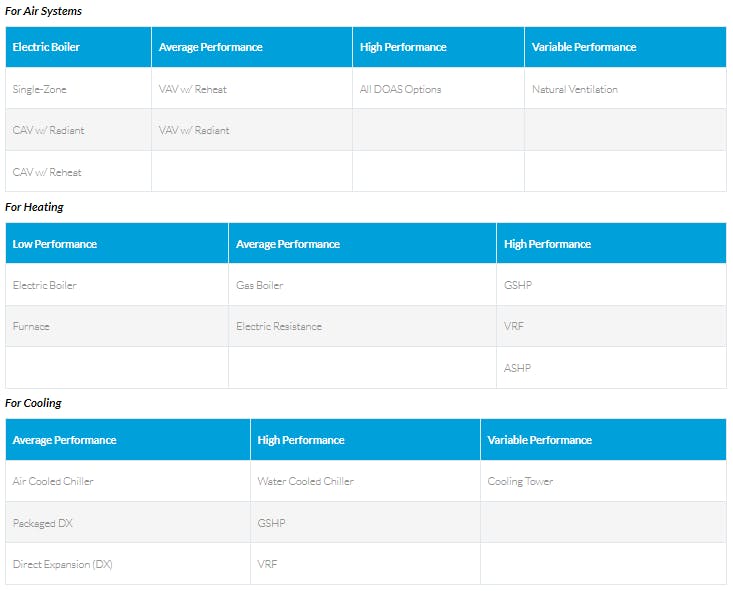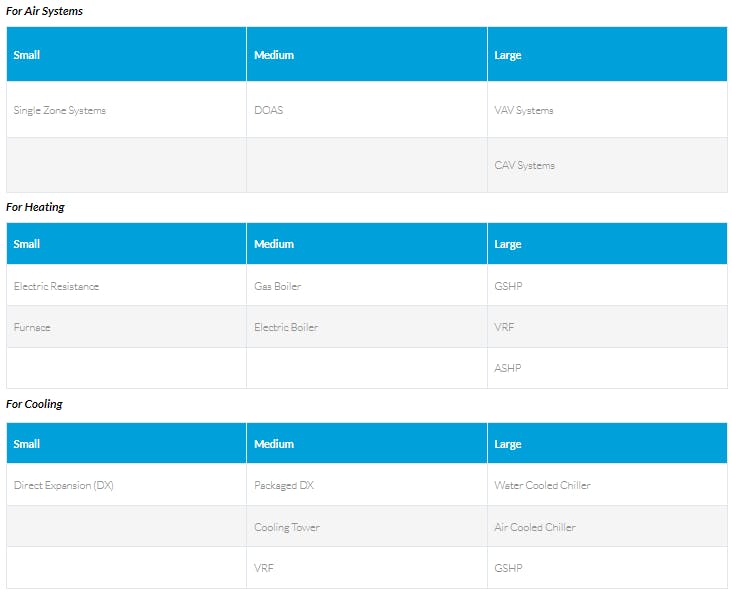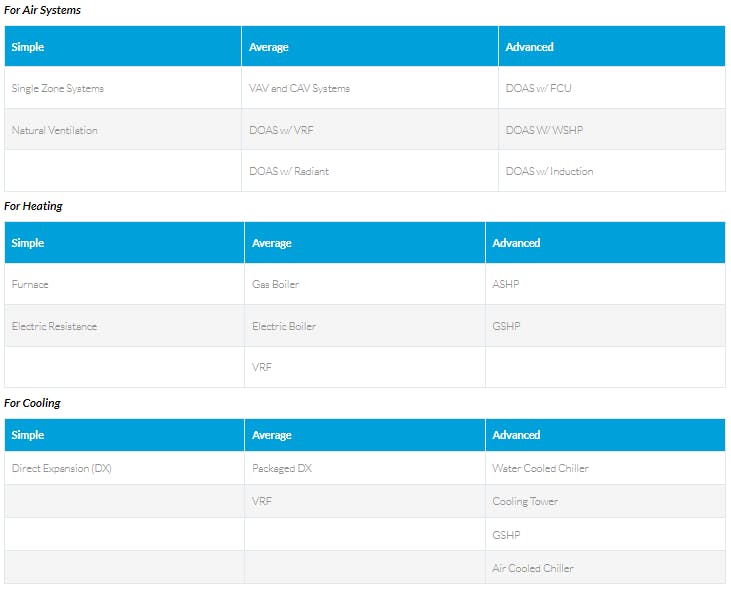
Why Learn About Commercial HVAC Systems?
Are you an architect looking to expand your knowledge and expertise? Are you a mechanical engineer looking to brush up on your commercial heating, ventilation, and air conditioning (HVAC) know-how? Are you a building owner or manager looking to better understand your HVAC system? Are you looking for ways to reduce your building's energy consumption and operating costs?
In this blog, we will explore the importance of developing an understanding of commercial HVAC systems is important and how it can benefit architects, building owners, and managers, in addition to engineers. We will provide a quick overview of commercial HVAC systems and discuss some important factors to consider when choosing an HVAC system for a commercial building.
If you are an architect, you understand the importance of designing buildings that are aesthetically pleasing, but also functional and comfortable for the occupants. Selecting the right HVAC system is crucial to ensure a comfortable indoor environment. Commercial buildings often have complex HVAC systems due to their large size and the diversity of occupants and activities they support. Thus, deepening your understanding of these systems will help you enhance the comfort and functionality of your project.
It is also important for commercial building managers and owners to understand how their HVAC systems work so that they can maintain and operate these systems more effectively. Since commercial HVAC systems are a critical driver of the overall comfort and productivity of a building's occupants, understanding each system is an important component of a building owner's and manager's responsibility. HVAC systems can also be a significant source of energy consumption, so understanding how to operate these systems efficiently will help reduce energy costs and greenhouse gas emissions.
Disclaimer:
As no well-established guide or widely agreed-upon standard provides information for architects, engineers, building owners, and managers to choose an HVAC system, we created our e-book, Choosing the Right HVAC Systems for Your Building Design, to fill the void. Our e-book hopes to inspire confidence in a project team, as the uncertainty around selecting an HVAC system is typically listed as the top deterrence for why architects don't run energy models. The conventions listed in the e-book are based on years of industry experience of cove.tool's mechanical engineering and research team. If an engineer becomes involved later in the project's life cycle, they may choose a different system.
What is a Commercial HVAC System?
A commercial HVAC system is a type of mechanical system that is designed to provide heating, ventilation, and air conditioning for a commercial building. The HVAC system is responsible for maintaining a comfortable indoor environment by regulating the temperature, humidity, and air quality of the building. Commercial HVAC systems typically consist of a network of ducts, pipes, fans, pumps, air handling units, heating plants, and cooling plants that distribute heated or cooled air throughout the building. They also include other smaller components such as air filters, diffusers, terminal units, and more that help the system maintain a comfortable indoor environment.
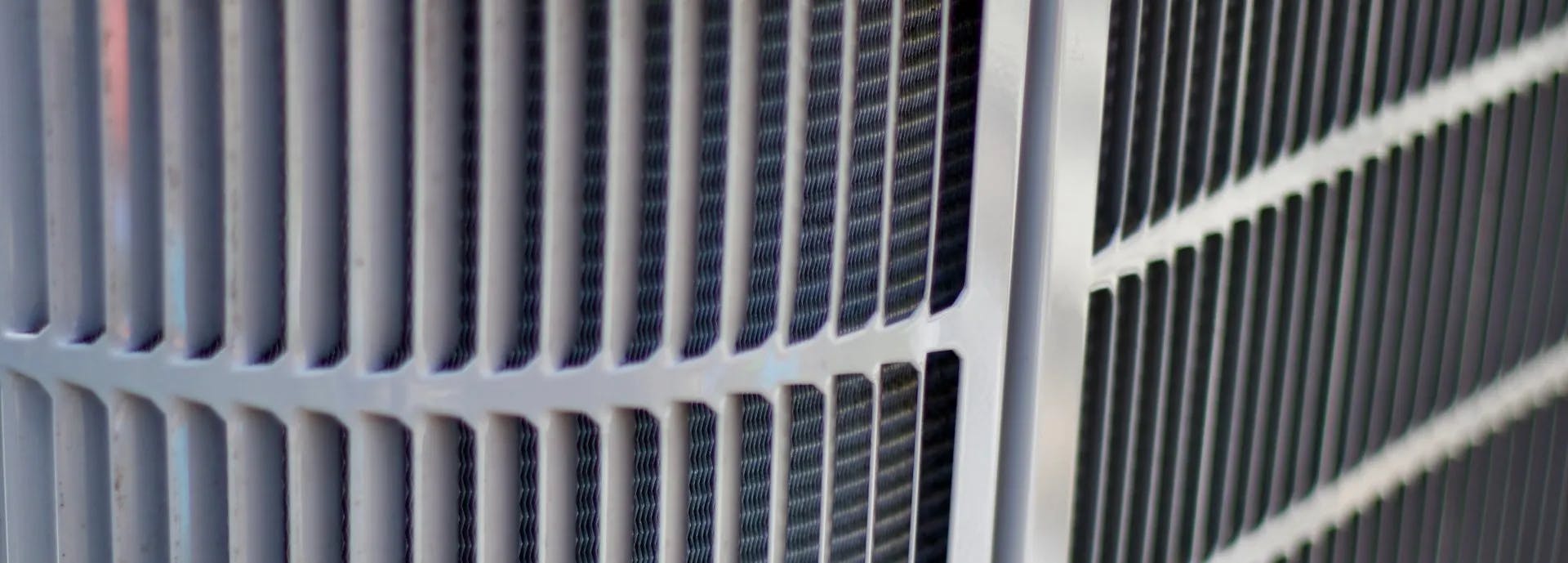
What are the Types of Commercial HVAC Systems?
There are many different types of commercial HVAC systems, each designed for a range of applications and building sizes. Three common HVAC systems are split systems, packaged systems, and VAV systems.
Split Systems
Split Systems are a common type of commercial HVAC system that delivers heating and cooling and consists of an outdoor unit (condenser) and an indoor unit (evaporator). The outdoor unit contains the compressor and condenser coil, while the indoor unit contains the evaporator coil and fan. Split systems are versatile and can be used in a variety of buildings, from small office buildings to large warehouses. It is important to note that split systems do not include ventilation directly and must be combined with another system if ventilation is required.
Packaged Systems
Packaged Systems, on the other hand, contain all the components of a split system (compressor, condenser, evaporator, and fan) in a single unit. In addition, packaged systems typically include ventilation via an outdoor air intake. These systems are typically used in smaller buildings where internal space is limited, but roof space is abundant, such as retail stores, small offices, or restaurants.
Variable Air Volume Systems
VAV or Variable Air Volume Systems are the most diverse commercial HVAC systems and come in many varieties and sizes. Like packaged systems, VAV systems include ventilation, heating, and cooling conditioning. They are typically used in any commercial building that is medium to large.
How to Choose a Commercial HVAC System?
There are several key factors to consider when choosing an HVAC system for a project.
First, assess the heating and cooling needs of the building and its occupants. This will help determine the needed size and type of HVAC system.
Second, consider the efficiency and environmental impact of the system. High-efficiency systems can save on energy costs and reduce greenhouse gas emissions.
Third, consider the building's design and layout and any potential challenges or constraints related to installing an HVAC system.
Finally, research and compare different HVAC systems and manufacturers, and get selections from multiple sources to ensure you are getting the best value for your project.
Selecting Your Commercial HVAC System
Although choosing a system for a project typically lies within the scope of the mechanical engineer, there are some conventions you can follow. There are three paths for HVAC system selection:
Path 1: Use US DOE Prototype Buildings as a Reference
The US Department of Energy (DOE) works with its national laboratories to create resources for verifying the performance of new and proposed energy codes. One resource, created and maintained in part by the Pacific Northwest National Laboratory (PNNL), is the prototype building models. At cove.tool, we use the US DOE prototype building models for input automation when energy codes do not define all the prescriptive values needed to run an energy analysis.
The US DOE prototype building only includes 16 commercial building types with fixed parameters, which may vastly differ from your project. To see a full summary of the building description and other key modeling input information, download the scorecards from energycodes.gov.
If you elect to use this path for HVAC system selection, reference our e-book for a full breakdown of assigned system types for each prototype building model.
Note: HVAC Systems include a lot of individual equipment. To help capture each unique piece, we break these down into the Air System, Heating System, and Cooling System. More information on how HVAC systems are defined can be found in this article.
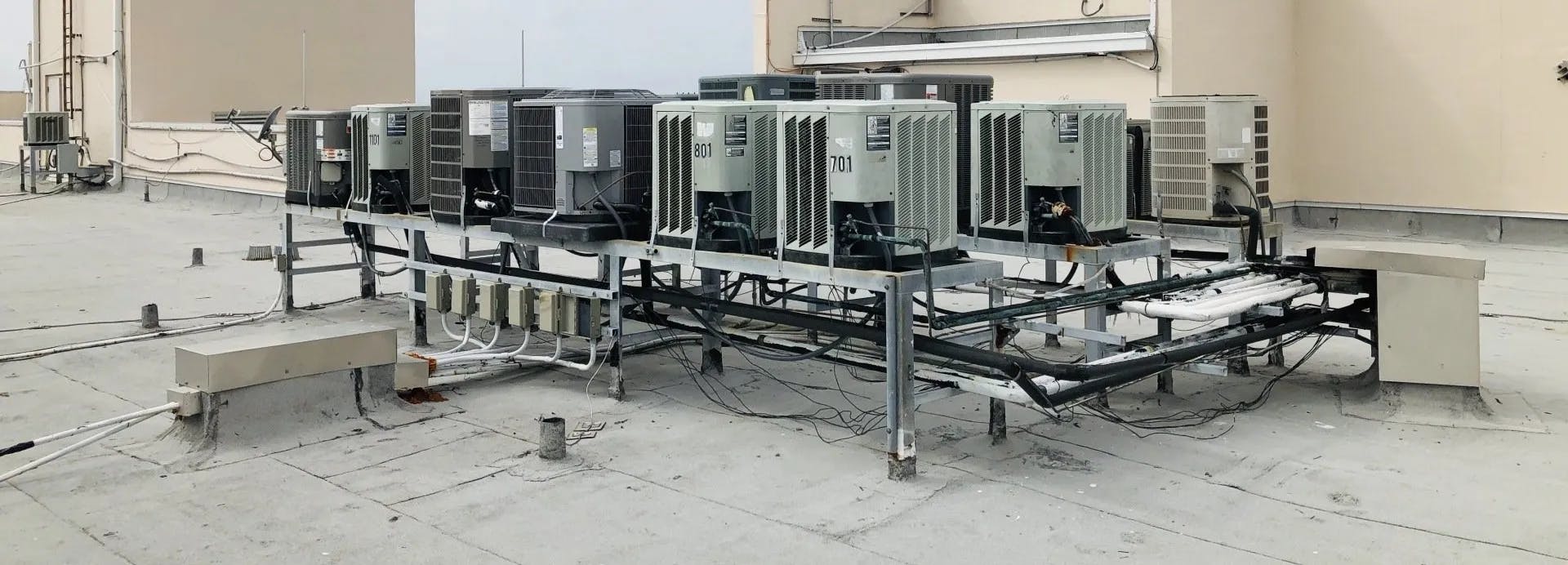
Path 2: Project Scope Factors
When mechanical engineers choose an HVAC system, they consider a wide range of parameters, including performance, capital cost, heating source, space requirements, and ease of maintenance. This method is also effective for architects to shortlist a system based on project criteria.
Performance – How energy efficient is the system?
Our e-book divides the components of HVAC systems into four performance tiers:
Low Performance will typically have the highest EUI and utility bills
Average Performance will have EUI and utility bills similar to the majority of buildings
High Performance will have the lowest EUI and utility bills
Variable Performance means that other factors make it difficult to predict performance
Capital Cost for Mechanical Systems – Is it within budget?
Our e-book breaks each component of HVAC systems into three tiers based on capital cost and places various system types into each tier. Although this list is non-exhaustive, it provides a good framework to consider when searching for a system type.
Low Cost - typically less than $5.57/ft2 ($60/m2)
Mid-Range Cost - Typically between $5.57/ft2 to $9.19/ft2 ($60/m2 to $99/m2)
High-Range Cost - Typically over $9.29/ft2 ($100/m2)
***costs may vary based on regional and market factors.***
Heating Source - Is the source gas or electric?
A heating source is the component of a system that generates heat and provides it to an HVAC system. This heat is then used to warm the interior spaces of the building. The type of heating source used in an HVAC system can vary depending on the size of the space being heated, the climate in which the building is located, and other factors. Some common heating sources for HVAC systems include furnaces, boilers, heat pumps, and electric heating elements.
Space Requirements - Will the system fit?
Mechanical equipment can take up a lot of space. When deciding on your HVAC system type, it is important to consider the space required to balance other requirements for space within a building. Our e-book breaks space requirements of each HVAC system type into three tiers:
Small - Equipment takes the least amount of space, often located on the rooftop [only] or in smaller mechanical rooms.
Medium - Equipment takes up a typical amount of space in the building and often requires dedicated mechanical rooms or a large portion of the rooftop.
Large - Equipment takes up the most space and often requires large mechanical rooms or additional ceiling void space.
Ease of Maintenance - Who will operate and maintain the system?
Every HVAC system must be maintained to ensure it is correctly operating and delivering the designed indoor environment. Our e-book divides systems into three tiers based on ease of maintenance:
Simple - limited maintenance is required. Typically, maintenance is handled through an annual maintenance contract, with no on-site staff required.
Average - some regular maintenance is required. Typically, maintenance is handled through monthly maintenance contracts or an on-site staff shared by a collection of similar buildings.
Advanced - frequent maintenance is required. Typically, full-time operation/facility staff are on-site performing maintenance activities daily.
Path 3: Conventional System Selections by Use-types
When selecting HVAC systems for a building, it is important to consider the building's use type. Building use types refer to the specific purposes for which buildings are designed and constructed. Different buildings are used for different purposes, such as residential, commercial, industrial, and public.
Each building use type tends to have its own respective heating and cooling needs, so the type of HVAC system chosen should be able to meet those needs effectively and efficiently. For example, residential buildings typically require smaller, more energy-efficient HVAC systems, while commercial buildings may require larger, more powerful systems to accommodate a greater number of occupants and a wider range of activities. Industrial buildings, on the other hand, may require specialized HVAC systems to handle the unique heating and cooling needs of manufacturing and production processes. Public buildings, such as schools and hospitals, may require HVAC systems that can provide consistent and reliable heating and cooling, as well as proper ventilation and air filtration to maintain a healthy and comfortable environment for occupants.
Check out our e-book for a non-exhaustive list of building types and the typical HVAC system that would serve them.
Want to Learn More about Commercial HVAC Systems?
Choosing the right commercial HVAC system for your project or building is an important decision that can have a significant impact on the comfort and efficiency of the building. By considering factors such as the size of your building, the climate in which it is located, and the specific heating and cooling needs, you can select an HVAC system that is well-suited to your needs and will provide reliable, efficient heating and cooling for many years to come.
If you want to dig deeper into HVAC system selection, check out our e-book, Choosing the Right HVAC Systems for Your Building Design, or our extensive library of articles within our help center.
Collaborative HVAC System Design
Embracing the innovative capabilities of cove.tool, particularly through project.assist and design.assist, can significantly enhance the sustainability and efficiency of architectural projects.
For engineers and architects, cove.tool's project.assist offers a revolutionary approach to understanding a project's energy usage and performance, providing an in-depth breakdown of the proposed Energy Use Intensity (EUI) and benchmarking data. This empowers design teams to make informed decisions while ensuring that projects meet and exceed sustainability goals with precision and ease.
design.assist presents a unique opportunity for manufacturers to place their HVAC systems directly in front of the right audience, ensuring that the best products are chosen to fulfill the project's specific needs.
By integrating cove.tool's AI-powered, on-demand, comprehensive reports into the design process, architectural firms of all sizes can achieve streamlined workflows, cost-effective consulting, and superior project outcomes. This approach not only aligns with the advancing goals of sustainability and firm economics but sets a new standard in the architectural design process, propelling the industry toward a more sustainable and efficient future.
